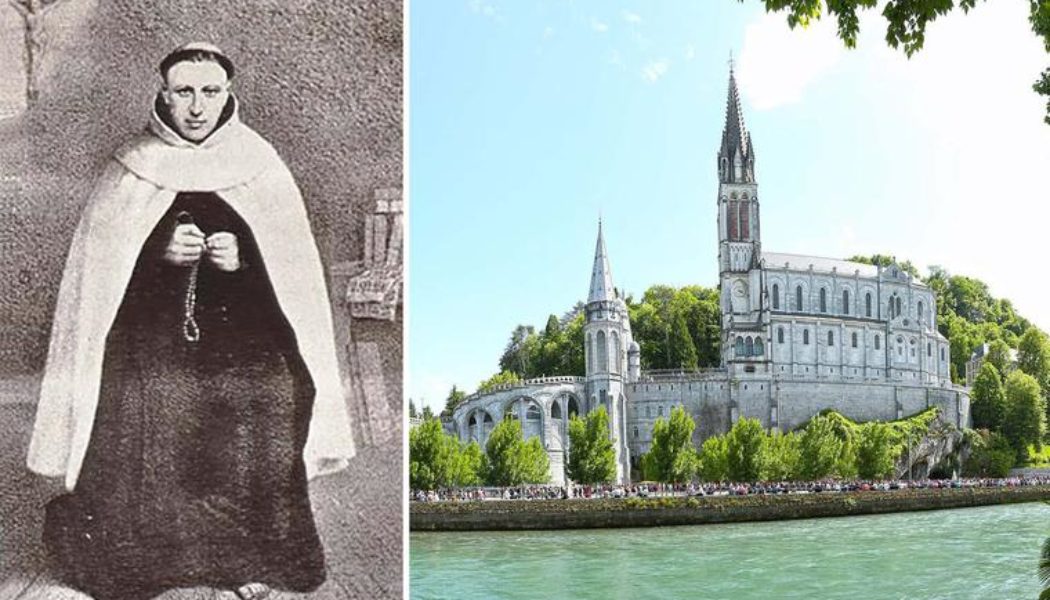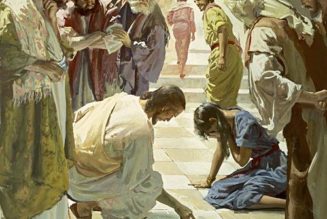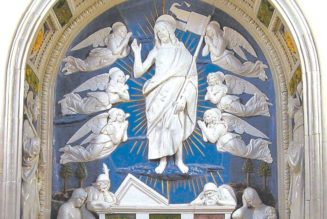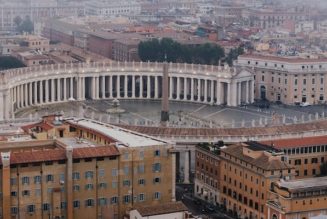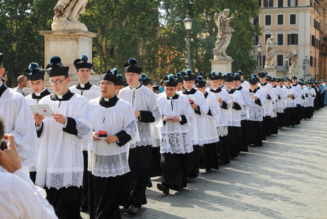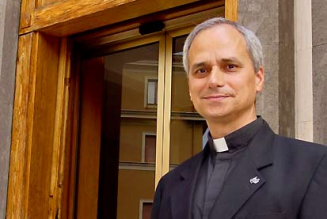
During his youth as an acclaimed pianist, Hermann Cohen — dubbed “Puzzi” by his adoring admirers — would have been the first to discount any notion that in 1858, he would become the first priest to lead a pilgrimage to the Shrine of Our Lady of Lourdes in France.
As Carmelite Father Timothy Tierney explained in his biography, The Life of Hermann Cohen, from Franz Liszt to John of the Cross, Cohen was born to a Jewish family in 1821, in Hamburg, Germany, and grew up, steeped in the materialistic values of his father, a wealthy financier. God and eternal values were far from his mind. Following his conversion, Cohen later described in a sermon his futile search for happiness during his concertizing days and career, and said:
I have sought it in the elegant life of salons, in the giddy pleasures of balls and banquets, in the accumulation of money, in the excitement of gambling. I have looked for it in the renown of the artist, in the friendships of famous people and in all the pleasures of sense and spirit.
According to Father Tierney, Cohen’s vacuous pleasures began at the age of 6, when he began piano studies with the most famous professor in Hamburg, who declared him “a genius.” Cohen admitted the flattery was enough to justify his teacher’s scandalous behavior with women and to desire to ape his behaviors. He dressed in the latest fashions like him. He went with him to social events. He mimicked his conceited airs and learned from him how to mingle with the elite, all doting over Hermann like a little pop star.
At age 12, following the financial collapse of his father’s business, Cohen was taken by his distraught mother, determined to secure her son’s success, to Paris where he was accepted as a student at the Conservatoire under the auspices of Franz Liszt, the most revered pianist of that time. Liszt guided Cohen to pianistic perfection, and within two years, was garnering for him high fees in recitals, and in Geneva where he was awarded a teaching professorship at the age of 15. Then, without warning, Liszt suddenly walked out on both his long-time mistress and Cohen, leaving Cohen for the first time without an idol or mentor. Lost, he returned to Paris to resume his former concertizing circuit, and began socializing with ideologues in the salons, among them, novelist George Sand and fallen-away priest, Félicité Lamennais. Cohen said they used him as a scapegoat for all their reprehensible ideas, including atheism, pantheism, Communism, terrorism, anarchy and the abolition of marriage.
More deleterious, however, was gambling, which Cohen quickly became a slave to in the casinos. He explained the horrors of his addiction in a sermon, and wrote:
O, the feeling of rage — he loses again. Again, with red and angry face he will spew up blasphemies. … He curses, he launches a torrent of abuse and invective. He locks himself up away and cannot join in with his friends and pals. … He has become a slave to an implacable tyrant. Passion holds him up again to cruel emotions, the painful tortures of hope deceived. Passion holds him in an iron grip and prevents him sleeping by day or night.
Cohen said the gambler has nightmares, grapples with insomnia and desolation, and contemplates suicide. But again, he concludes, he returns to the tables once again in hopes of “one more go at gaining a fortune.”
Perhaps it was the memory of hearing or performing music on the organ that rekindled faith in his heart and encouraged him to take a step toward freedom. As he described later in a prayer:
O my God. I was filled with a foretaste of holiness. Did you not cause to stir in my soul an intimation of religious faith? What then was that deep feeling, which I always experienced since my youth when I myself touched or heard someone else play the notes of the organ?
The answer, he knew, had been revealed to him by Mary while conducting the choir at a special service in her honor at the church of St. Valère in May of 1847. Cohen said he initially agreed to participate in the event purely from his interest in music and to do the job well. But as he turned and the Blessed Sacrament was elevated in Benediction before the congregation, he said he suddenly felt as if he had found himself — “like the prodigal son facing himself.”
Humbled, he bowed his head in adoration, began to attend Mass daily, and was baptized on Aug. 28, the feast of St. Augustine.
From that moment, he became an unstoppable missionary. He helped to establish and to promote a movement known as the Nocturnal Adoration of the Blessed Sacrament. In 1849, he entered the Carmelite Order, taking the name Augustine Mary of the Blessed Sacrament, and was ordained to the priesthood four years later. In 1858, while working to establish new monasteries near Lourdes in southern France, it was then that he led his historic pilgrimage to pray at the grotto on Sept. 20, two months after Mary’s final appearance to St. Bernadette Soubirous. That day, the tiny niche had been barricaded off from entry by Commissar Jacomet, a fierce adversary of the events.
In his book, Bernadette Speaks: A Life of Bernadette Soubirous in Her Own Words, author Father René Laurentin recounted the remarkable scene as described by Jacomet in his official report:
Early this morning there was a lot of agitation at the grotto caused by Father Hermann and Doctor Dozous who left the town together and went to the grotto; and there, surrounded by a curious crowd who had come with the Carmelite, Father Hermann, they sang the ‘Magnificat’ and another psalm so loudly that his voice could be heard all the way to Pau.
No doubt a sign of Mary’s approval of Cohen’s witness and of the power of her intercession, nine days later the barricades were removed.
Lourdes continued to be a source of grace for Cohen in the following years, particularly in 1868, after being diagnosed with glaucoma. Suffering and in great pain, he traveled to Lourdes and began a novena, each day praying through Mary’s intercession at the grotto and washing his eyes in the miraculous waters of the spring. On the final day, realizing the last symptoms of the disease had disappeared, he was overjoyed and shared the news in a letter to a confraternity of friends: “I am completely and totally cured! It is my inmost conviction that this cure is due to the intercession of Our Blessed Lady.”
Cohen attributed every grace in his life, most especially his conversion, to Mary. She it was, he told others, who showed him the Real Presence of Jesus in the Blessed Sacrament. She was the one that led him to the “holy desert” of Carmel and guided him to his ordination as a priest. Mary had guided him throughout his missionary journeys, and finally, back to his native home of Hamburg where he attended to the spiritual needs of French prisoners, forbidden by the ruling Prussian government from receiving the assistance of French chaplains. From morning until night, Cohen offered words of counsel and hope for their troubled souls and administered the sacraments. It was during his time among the prisoners that Cohen contracted smallpox and died shortly afterward on Jan. 20, 1871.
The cause for Hermann Cohen’s beatification is now underway. He is model of hope for all those suffering addiction, physical or emotional illness, or have been led astray by idols of materialism, false religious practices and dangerous ideologies afflicting our world today. Turn to him as a friend. Ask his intercession for favors. And trust with firm faith in God’s Word, as Mary did, that “Nothing is impossible with God.”
Join Our Telegram Group : Salvation & Prosperity
